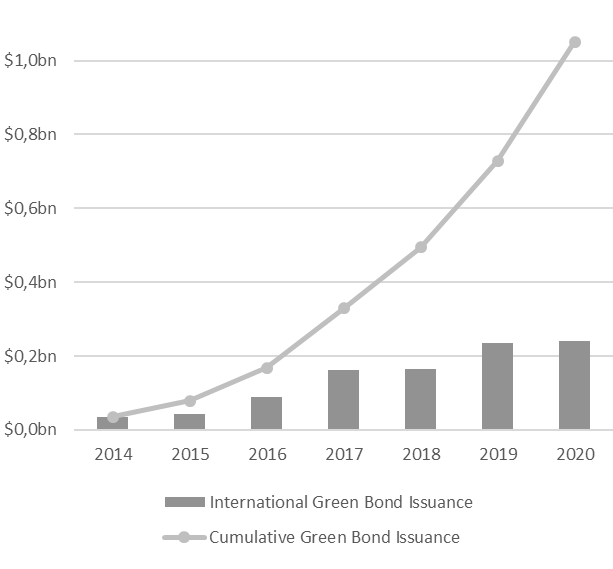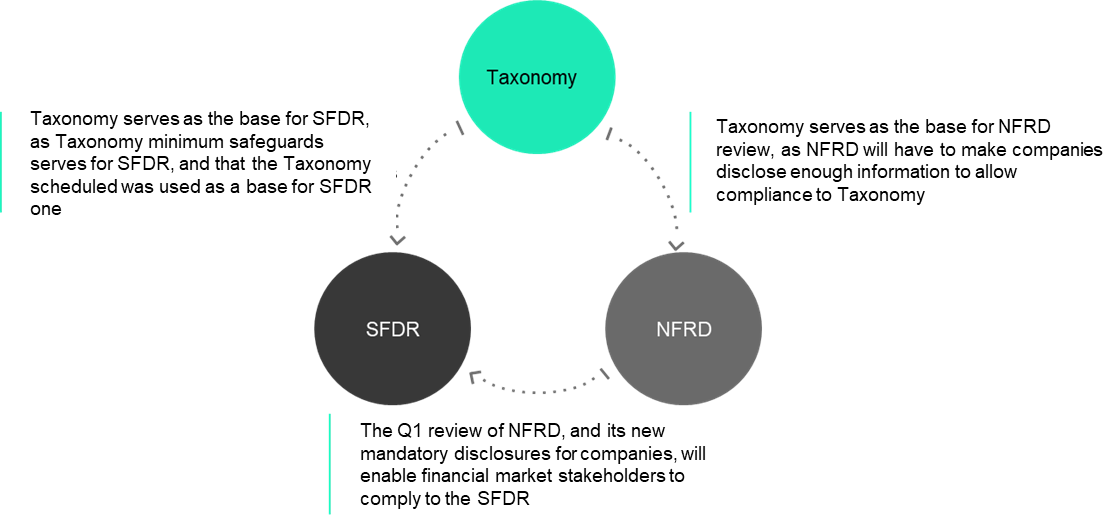Carbon Accounting Management Platform Benchmark…

Following COP 21 and the Paris Agreements in 2015, efforts related to sustainable finance have been particularly focused on environmental impact, also known as "green finance". The first work on this subject dates back to January 2018 with the final report of the HLEG (High Level Expert Group).

This report led to the creation of a European action plan for financing green growth and the establishment of the TEG (Technical Expert Group). The TEG then laid the foundations for regulations on sustainable finance, aiming to respond to the need for transparency.
In this article we will look at:
To counter the deleterious effects of global warming and achieve the Paris agreement's objective of reducing greenhouse gas (GHG) emissions by 40%, the EU Commission estimates that 270 billion euros in annual investments will be required in the energy, transport, water and waste management sectors for Europe. To achieve these objectives, it will be necessary to rely on private investment and redirect capital towards greener investments.
Two of the major issues of green finance are its lack of legibility and greenwashing. To counter these, the European Commission is counting on greater transparency on the part of financial market players. This increase in transparency is set to be achieved through the three regulations we will outline in this article.
The market for green financial products has been skyrocketing in recent years: it has grown from $12bn in Q1 2015 to almost $155bn in Q3 2020 for sustainable bonds. Green finance is no longer the prerogative of investors' ecological conscience, but a rapidly growing and maturing market, presenting real opportunities for different types of investors.

Green bonds market evolution between 2014 and 2020
One of the objectives of the European Commission is to multiply the profiles of investors interested in sustainable financial products. To do so, it seeks to give credibility and structure to this market through various regulations. This point is addressed by three major regulations: The Taxonomy (EU 2020/852), the Sustainable Finance Disclosure Regulation (SFDR, EU 2019/2088) and the review of the Non-Financial Reporting Directive (NFRD, EU 2014/95). The objective of these three regulations is to increase the disclosure obligations of financial market participants regarding their ESG (environmental, social, governance) actions and policies. These publications will serve to strengthen investors’ confidence and to simplify due diligence processes for green products, both for investors and financial companies.
The EU Taxonomy laid the foundations for green finance in Europe. The primary objective of this regulation is to clearly define the notion of a "green product". Its first consequence will be the standardization of such products by directly limiting greenwashing. It will also be possible to quantify the environmental sustainability of a financial asset, for instance, by calculating its percentage of alignment with the Taxonomy. To be qualified as "green", or aligned with the Taxonomy, a financial asset must meet three conditions:
The Taxonomy is not an end in itself. The major interest of this common definition is to provide a basis for building new products and new regulations.
There are two regulations soon to be introduced, the SFDR, which will come into force in March 2021, and the NFRD, which is already in force but will be revised in Q1 2021. The NFRD requires leading European companies to communicate their environmental and social impact through extra-financial reporting. The information published under NFRD will be used as raw data for the calculations of the Taxonomy criteria. The Taxonomy will therefore serve as the basis for the review of the NFRD, with the aims of improving the ability of companies to be compliant with the Taxonomy.
The scope of NFRD is also expected to be broadened through this review. The scope of Taxonomy being the same as NFRD, will also broaden the Taxonomy scope.
The SFDR requires financial market players and advisers to disclose their investment policies in terms of responsible investment. It will also impose minimum guarantees modeled on those of the Taxonomy, in order to ensure consistency between these two regulations. The Taxonomy will also serve as a basis for the establishment of new sustainable products, mainly the European Green Bonds Standards (EU-GBS), in order to strengthen both the credibility of the Taxonomy, and the use of the various European regulations on green finance.

Synergies between SFDR, NFRD and the Taxonomy
The prospects for the evolution of the Taxonomy do not stop here, however, as the AMF calls for the implementation of a "Social Taxonomy", based on the Environmental Taxonomy, which would also serve to create a standard for Social Bonds, on the model of the EU-GBS, provided that the latter achieves the expected success.
The Taxonomy and SFDR are constructed on the same model: Comply or Explain. This means that Financial services companies would either have to comply or explain why they won’t be complying to regulation. They will also follow a very close entry-into-force schedule. Both regulations will require reporting for Financial companies on two levels: Products and Entity. At the product reporting level, there is required disclosure such as pre-contractual information concerning products presented as green or information on the environmental objective to which the investment contributes. At the Entity reporting level, disclosure of information such as t sustainability risks in investment, remuneration policies, or the share of investments made in sustainable economic activities will become mandatory. They will also have to share information regarding non-green products, such as whether they are compliant with the DNSH criteria or not. These publications will be found on a variety of media: pre-contractual reports, websites and periodic reports. Finally, it is interesting to note that the French 29th article on energy-climate law complements these requirements with a publication considering risks related to biodiversity. Both regulations' disclosure will be justified by calculating either criteria or indicator. These indicators and criteria will allow to assess quantitatively the greenness of actions of the financial company.
Finally, in order to meet these two regulations, financial services companies will need to have access to precise information concerning the environmental and societal impacts of their investments. The review of the NFRD should meet part of this need. It will provide access to all this information for all companies subject to the Taxonomy. We can also note that many financial companies will be subject to the NFRD, in addition to the Taxonomy and the SFDR.
The implementation of this ambitious European regulatory framework leaves some questions unanswered. How will the issues of sovereigns be integrated into the various expected publications? What reporting requirements will they be subject to in the context of their market activities?
The question of data will also be a central one. Indeed, the NFRD review will allow banks and other market participants to have access to more data, which could lead to cost reduction in data acquisition, but some niches remain; companies that are not covered by NFDR (Start-ups and small businesses), Real estate assets, etc. In these cases, financial market participants will have to continue to rely on ESG data providers. The use of ESG data providers, in turn, raises a number of questions: choice of provider, costs, data quality issues, dependency on providers in the UK and the US, and so on.